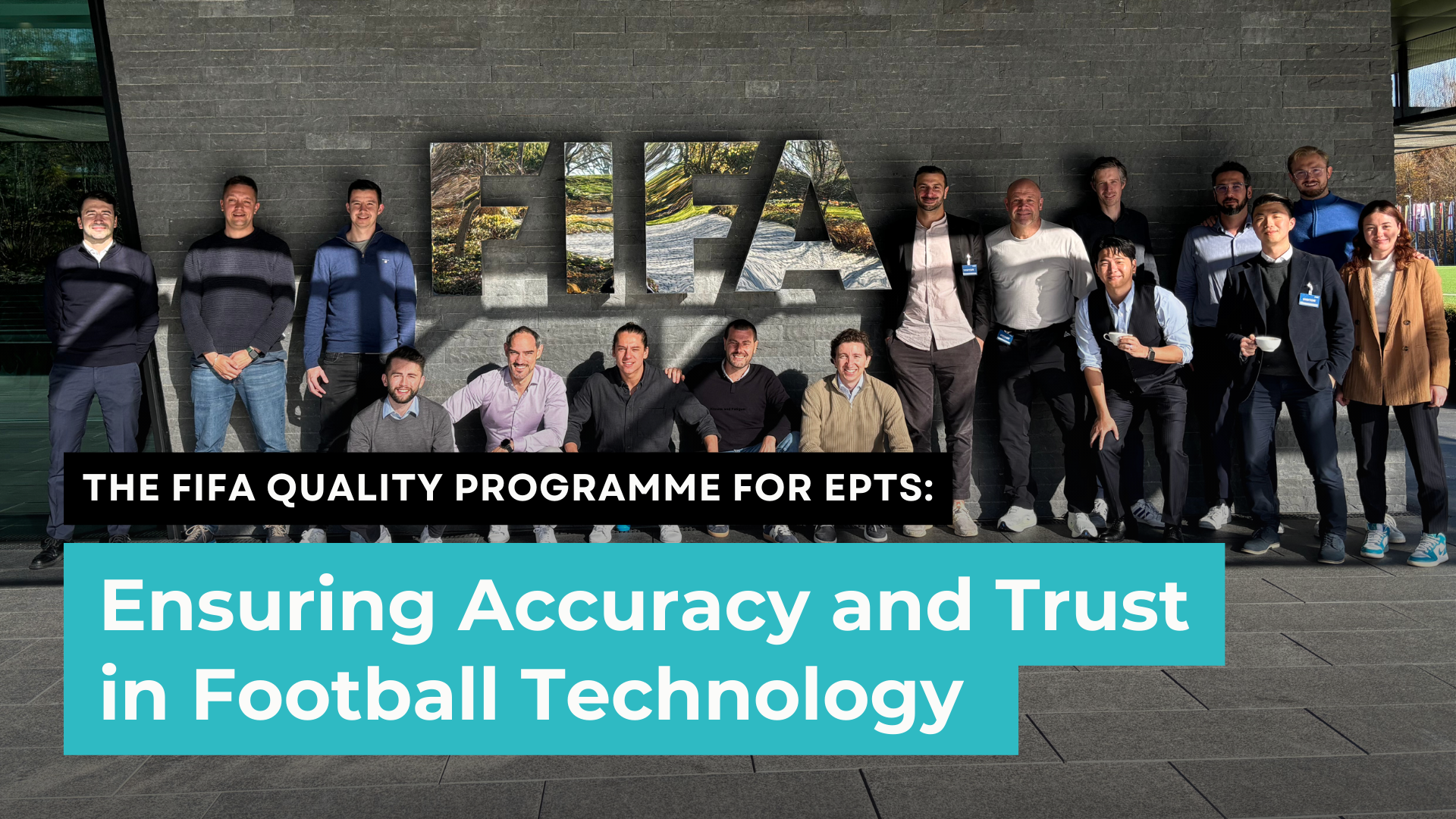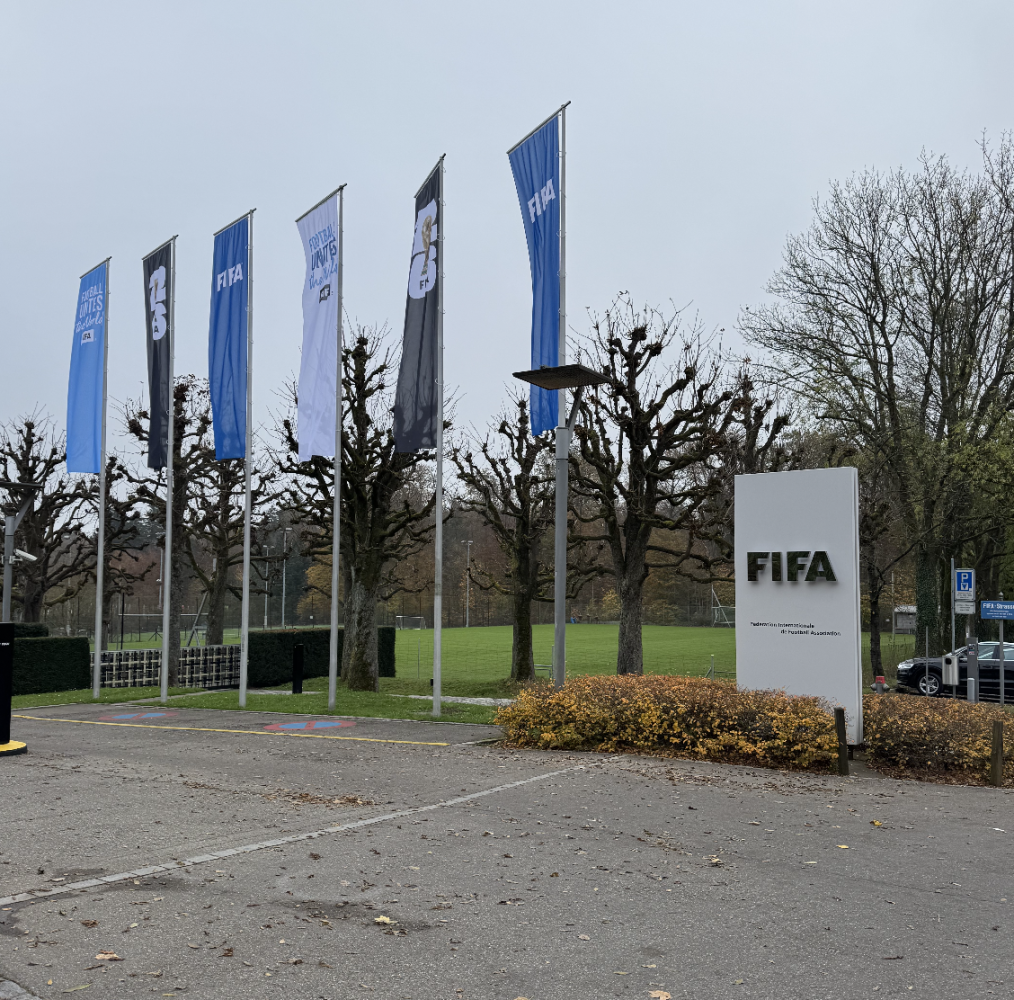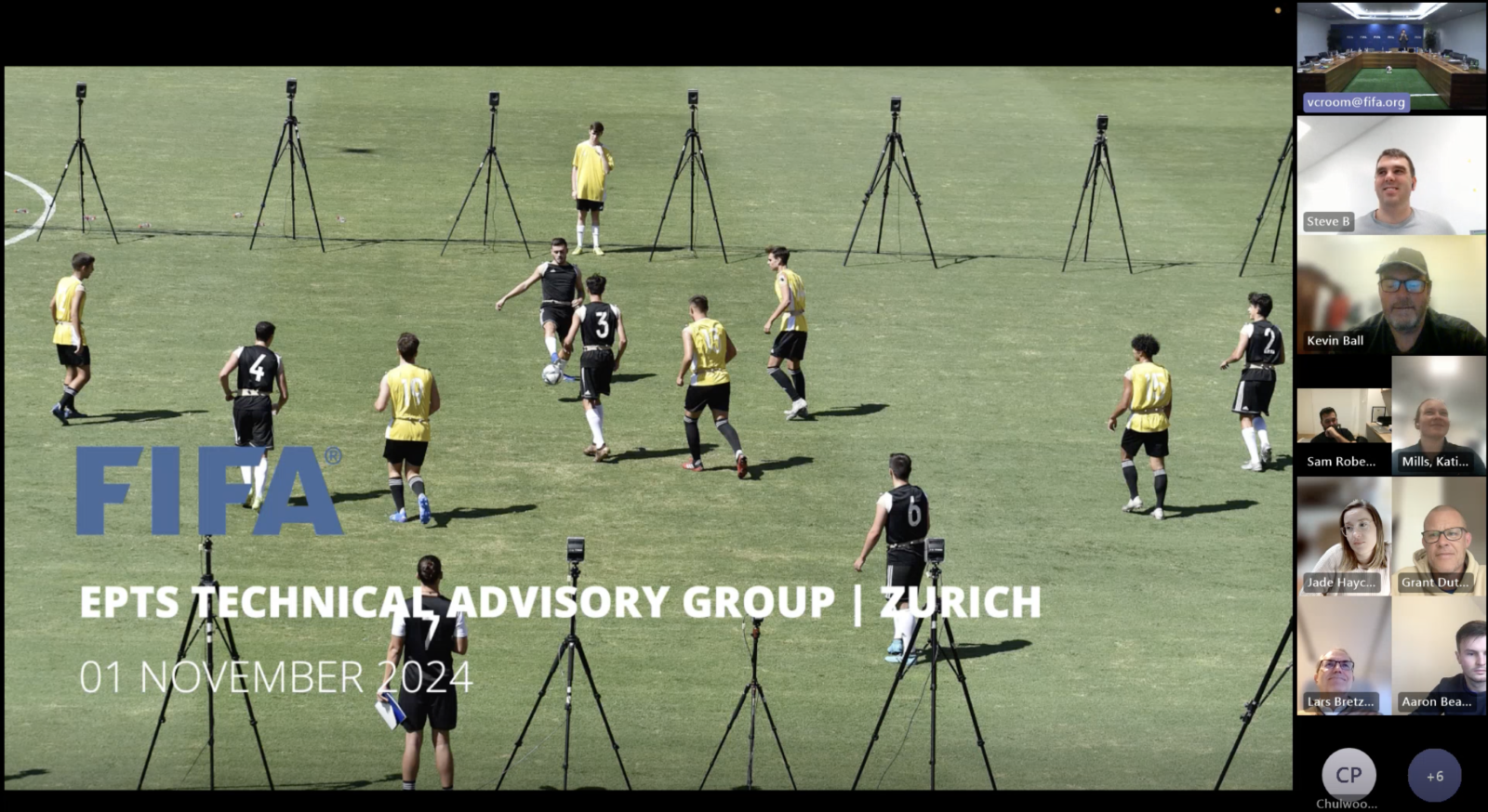
In the modern era of football, technology has transformed how teams train, strategize, and evaluate performance. Among these innovations, Electronic Performance and Tracking Systems (EPTS) stand out as a crucial tool in understanding and enhancing player performance while aiming to reduce injuries.
These devices, worn by players either on the upper back or on the boot, provide precise data on movements, speed, distance, and other metrics critical to improving individual and team performance. However, with data-driven technology comes the responsibility to ensure accuracy, safety, and consistency—standards set by the rigorous EPTS testing process. With FIFA being the governing body of world football, it is only fitting that FIFA is the one to organise and oversee the development of technologies and is given the responsibility of setting the standards. Especially as the market continues to grow, with more and more companies providing GPS services to football teams all over the world.
In this blog, we’ll explore the origins of The FIFA Quality Programme for EPTS, its phases, and the benefits companies can reap by achieving FIFA’s highest certification standard.

1. The Evolution of FIFA’s EPTS Testing Process
The journey toward establishing FIFA’s testing standards for EPTS began as tracking technology became increasingly prevalent in elite football. Initially, teams relied on GPS and optical systems to track player movements and record critical data points. While the initial technology offered groundbreaking insights. With the increasing influence of data in decision-making, the demand for high-quality, verified information grew, driving FIFA to develop a robust testing protocol.
In 2017, FIFA introduced its first set of standards for EPTS devices, aimed at ensuring the technology used by teams met certain criteria for accuracy, consistency, and player safety. These standards were developed in partnership with experts from academic institutions, technology developers, and elite football clubs. Since then, the testing process has evolved, adapting to advances in technology and incorporating even more precise evaluation techniques, positioning FIFA as the benchmark for quality assurance in football technology.
2. The Phases of FIFA EPTS Testing
The FIFA EPTS testing process comprises two primary evaluations; Safety Test and Performance Standard, each designed to assess different aspects of the device:
a. Wearable Safety Test (FIFA Basic)
This initial phase ensures that the EPTS devices meet essential safety criteria. Since many tracking devices are worn on the player’s body, often in high-intensity and contact environments, FIFA enforces strict standards to prevent injury or interference. The safety test examines the materials, design, and durability of each device, confirming it poses no risk to players on the field.
The devices that pass this test receive the FIFA Basic mark, an indication that they meet FIFA’s safety standards. This is particularly important for teams that want to be confident that using such technology won’t lead to unnecessary risks for players.
b. Performance Standard Test (FIFA Quality)
The second phase of testing is centered on the device’s accuracy in tracking players and recording data. During this assessment, devices undergo rigorous tests to verify their precision in tracking player positions, distances, and velocities. The tests utilize two industry-leading motion tracking systems:
- Vicon Motion Capture System: This system is used in a controlled environment, typically a 30x30m test area, where it serves as a "gold standard" for measuring player movements. The device is tested for its ability to accurately track specific metrics, such as player position, distance, and velocity, against the precise data captured by the Vicon system.
- Victoria University Vision Kit: To simulate real-game conditions, this system is utilized on a full-sized football pitch. It measures the performance of the tracking device in tracking multiple players simultaneously, assessing how well it maintains accuracy when scaled up to match conditions.
The data output from the EPTS device is then compared against these two reference systems to determine its precision. Metrics such as position errors, velocity discrepancies, and the consistency of data capture are analyzed in detail.
Companies whose devices receive high level of accuracy results will publish the FIFA report alongside the FIFA Quality mark, signifying they meet FIFA’s high standards for data accuracy in competitive football environments. This certification is highly sought after by companies, as it represents a level of trust and reliability recognized worldwide.
3. Benefits of Achieving FIFA’s Highest Accuracy Certification
For companies manufacturing EPTS devices, achieving exceptional accuracy the FIFA Quality mark represents more than just passing a test—it’s an endorsement of quality, precision, and reliability. Here are some of the key benefits:
- Increased Trust Among Current Clients and Potential Clients
- Competitive Edge in a Growing Market
- Enhanced Credibility & Market Recognition
- Alignment with Industry Standards
- Exposure through FIFA Quality Program
These are all benefits companies will strive for, ensuring that their company name is up and around the top of the list for potential clients and investors. However from a user perspective, your Sport Scientists, Physical Performance Coaches, Physios etc who will be using this system on a daily basis to help provide data driven decision making that impacts performance and reduces injuries, what does the FIFA Quality Mark actually mean?
GPS data has become an integral part of sport science, influencing critical areas such as Loan Management, Periodization, Injury Prevention, and Performance Monitoring. With its widespread use, the accuracy of GPS data plays a pivotal role in decision-making, providing teams with the confidence to optimize player performance and availability for the Head Coach. Below are some examples of how more accurate GPS data can benefit the user and ultimately the team:
- >90% Speed Exposures: Research indicates that exposing players to >90% of their maximum speed 1–2 times per week significantly reduces the risk of hamstring injuries. With more accurate GPS data, you can trust the recorded speeds, ensuring your players are consistently reaching the required thresholds. This increased confidence reinforces your injury prevention strategies and validates the effectiveness of your processes.
- Pre-Season Training: Pre-season is one of the most demanding periods of the year, designed to build fitness and prepare players for the season ahead. Studies show that completing more training sessions during pre-season is associated with fewer missed sessions throughout the season. Accurate GPS data ensures that prescribed training loads are both appropriate and effective, giving you confidence that your carefully planned sessions are hitting their targets and laying a solid foundation for the season.
- Baseline Testing and Pre-Season Friendlies: Baseline data collected during pre-season testing and friendlies is vital for Return-to-Play (RTP) protocols. Key metrics such as maximum speed, maximum acceleration and deceleration, most intense period of play, and core match data (e.g., full-game stats) form the foundation of player profiles. These metrics, alongside training and match data, inform rehab progression, ensuring players meet all physical requirements before returning to full competition. More accurate GPS data provides confidence not only in the current rehab process but also in managing future scenarios, should injuries occur.
- Top-Up Conditioning: Accurate GPS data is invaluable for fine-tuning conditioning. Metrics such as high-speed running (>19.8 km/h) and sprint distance (>25.2 km/h) are used to calculate match-day volumes and identify players who need additional top-ups to maintain fitness and prevent injuries. Reliable data ensures that conditioning programs are tailored precisely to each player’s needs, optimizing performance and safeguarding against overtraining.

Achieving the FIFA Quality mark is more than just a certification; it is a symbol of excellence that underscores a company’s commitment to delivering safe, accurate, and reliable tracking solutions.
For manufacturers, this prestigious recognition provides a competitive edge, boosting credibility, enhancing market visibility, and aligning their products with the highest industry standards. For users, such as Sports Scientists, Physical Performance Coaches, and Physios, the FIFA Quality mark represents confidence in the data that drives their decisions—whether it’s monitoring player load, preventing injuries, or optimizing performance on the pitch.
The benefits extend beyond credibility and recognition. By ensuring accurate GPS data, teams are empowered to make informed, data-driven decisions, from periodization and pre-season preparation to injury prevention and top-up conditioning. The knock-on effect of using a FIFA-certified system can have a big impact on improved player availability, enhanced performance, and reduced injury risks—key metrics that directly impact a team’s success.
4. Fitogether: Setting the Gold Standard in Accuracy
At Fitogether, we are proud to have been FIFA’s preferred EPTS provider since 2022, a testament to our dedication to innovation and accuracy. Most recently, our devices have been verified as the most accurate wearable system in the market—a reflection of our commitment to setting the benchmark in the industry. This distinction underscores the trust elite teams place in our solutions to deliver precise data that influences critical decisions, both on and off the pitch.
Fitogether has consistently been at the forefront of innovation and precision in football technology. This was recently reaffirmed through FIFA’s testing and evaluation process:
The above certification is valid for the next 4 years until 2028, underscoring our commitment to maintaining the highest standards of performance and reliability. Whether in live-match scenarios or post-match analysis, our devices consistently deliver data teams can trust to make informed decisions.
We’ve also been actively involved in shaping the future of football technology with FIFA.
Earlier this month, our CEO, Jinsung Yoon 私たちのエンジニアと一緒に、また出席しました TAG (技術諮問グループ) チューリッヒのFIFA本部での会議。 私たちはFIFAプリファードプロバイダーとして、サッカーテクノロジーの未来について業界のリーダーたちとのプライベートセッションや綿密なディスカッションに参加しました。 これらの会話は、フィールドでの私たちの立場を再確認しただけでなく、世界中のサッカー技術の水準を高めるという私たちの取り組みを強化しました。

FitogetherはFIFAの基準を満たしているだけでなく、その形成を支援しています。
GPSテクノロジーへの依存度が高まる中、FIFAクオリティマークはゴールドスタンダードであり続け、認定システムがエリートサッカーの厳しい要求を満たすことを保証しています。企業にとっては名誉の証であり、チームにとっては正確さと信頼の証です。Fitogetherが最も正確なプロバイダーとして先頭に立っているため、私たちは世界中のチームが卓越性、パフォーマンス、そしてプレイヤーの福利厚生を追求できるよう支援し続けています。
私たちのシステムがどれほど信頼性が高く革新的であるかがわかったところで、Fitogetherがチームのパフォーマンスをどのように変革できるかを探ってみませんか?
過去数年間、当社の精度と信頼性により、私たちはFIFAや世界中のエリートチームにとって頼りになる選択肢となっています。 今度は、同じレベルの正確さと信頼性を体験する番です。 今すぐ無料相談を予約する Fitogetherの業界をリードするソリューションが、データ、パフォーマンス、プレーヤー管理へのアプローチをどのように変革できるかをご覧ください。
正確さを重視した意思決定をお手伝いします。フットボールではあらゆるディテールが重要だからです
.png)
What%20is%20EPTS_Korea%20(1).png)